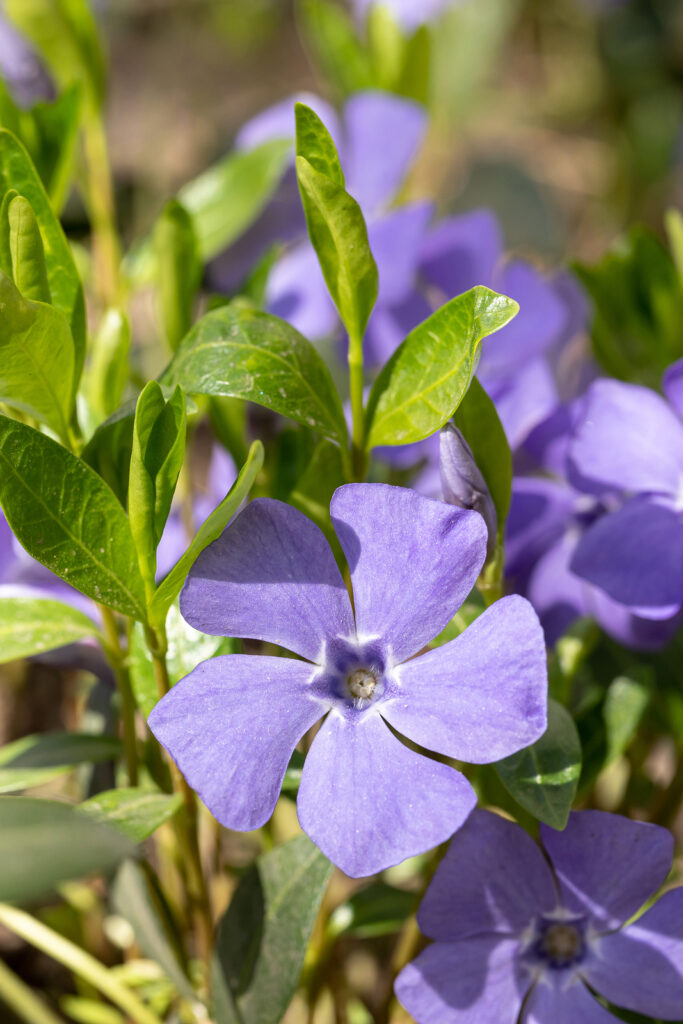Periwinkle, Vinca, is a slender-stemmed, evergreen subshrub or perennial with glossy, dark green pointed leaves topped with lavender-blue flowers in spring, reblooming in summer and fall. Periwinkle spreads rapidly and makes an attractive ground cover in partially shady spots.
Get to know Periwinkle
- Plant type: Evergreen spring-blooming groundcover
- Growing Zones and range: 4-9
- Hardiness: Half-hardy
- Height and width: 4”- 6” tall, 12”- 18” wide
- Foliage: Glossy, dark green pointed leaves 1-2 inches long
- Flowers: Blue, white, or pink about ¾ inch across
- Bloom time: Spring, reblooms in summer and fall
- Uses: Groundcover for erosion control on slopes; groundcover beneath trees and in shady spots
- Botanical name: Vinca minor
- Common name: Periwinkle, creeping myrtle
Where to plant Periwinkle
- Plant periwinkle in full sun to medium shade in Zones 4-6; light shade to full shade in hot-summer areas of Zones 7-9.
- Grow periwinkle in humus-rich, well-drained soil.

When to plant Periwinkle
- Set established periwinkle plants in spring or fall.
Planting and spacing Periwinkle
- Space periwinkle 12 to 18 inches apart.
- Add aged compost to the soil at planting time.
How to water and feed Periwinkle
- Periwinkle needs moderate to ample water; keep the soil evenly moist.
- Fertilize periwinkle with a slow-release fertilizer.
Periwinkle care
- Mulch periwinkle to prevent weeds from competing with periwinkle and to conserve soil moisture.
- Shear plants in early summer to stimulate thicker growth
- Periwinkle is prone to a few pests or diseases.
Periwinkle propagation
- Divide plants at any time or root cuttings in summer.
Periwinkle varieties to grow
- V. minor ‘Bowles’ is a dense grower; it is a heavy bloomer.
- V. minor ‘Aurea’ has all-gold leaves.
- V. minor ‘Alba-variegata’ has green and gold leaves.
- Vinca major very similar to vinca minor but more aggressive grower and can become invasive if not contained; leaves are larger.















